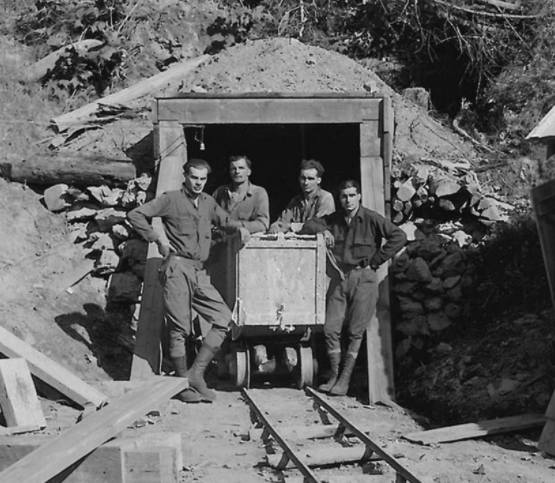Overview
The Bunker Hill Mine stands as a legendary fixture in American mining history, renowned for its exceptional base metal and silver production. Discovered in 1885, this iconic mine operated for over a century until its closure in 1991. During its remarkable 95-year run, Bunker Hill yielded an impressive 42.77 million tons of ore, boasting average grades of 8.43% lead, 4.52% zinc, and 3.52 ounces of silver per ton.
Historical Significance
The Bunker Hill Mine's impact on the Coeur d'Alene Mining District is profound:
- It accounted for nearly 42% of the district's total lead production
- Contributed 41% of the total zinc output
- Produced 15% of the district's total silver yield
Production Highlights
Throughout its operational history, Bunker Hill showcased remarkable productivity:
- Over 40 distinct mineralized zones were exploited
- 35 million tons of ore concentrate were produced
- A staggering 165 million ounces of silver were extracted
Location
The historic Bunker Hill Mine is located in the world-class Coeur d'Alene Mining District, the Silver Valley, renowned for its rich silver deposits. This strategic location was crucial to the mine's long-standing success and significant contributions to American mineral production.

Historical Context
The Bunker Hill Mine ceased operations in 1981 due to a combination of depressed base metal prices and the need for substantial capital investment to upgrade its facilities to comply with new environmental regulations. Since its closure, the mine has been under care and maintenance. As part of a U.S. Government-led regional environmental remediation effort, the mine's lead smelter and zinc processing plant were completely dismantled, and a government-operated Water Treatment Facility now manages its water discharge.
Revitalization Efforts
In 2020, a new leadership team took the helm, focusing on sustainable development and exploration of Bunker Hill's untapped zinc, silver, and lead resources. This team recognized a unique opportunity to leverage historical geological and production data using modern exploration software, creating new 3D models to identify potential extensions of known mineralized bodies.
Future Prospects
Leveraging modern analysis of historical data and five years of comprehensive geological work, including drilling, the company believes the Bunker Hill Mine is well-positioned to be redeveloped as a high-grade, long-life silver-zinc-lead operation.
The restart of operations remains on schedule for the first half of 2026, targeting an initial throughput of 1,800 tonnes per day (tpd), with sustainable free cash flow anticipated in the second half of 2026.
Ongoing exploration and metallurgical initiatives are focused on increasing the proportion of silver relative to zinc, supporting higher operating margins and enhanced cash generation over time.
In collaboration with the U.S. Export-Import Bank, the company is also advancing plans to expand production capacity to 2,500 tpd, further strengthening the project’s long-term value potential.


